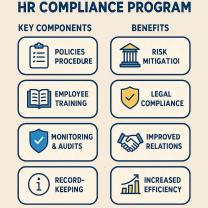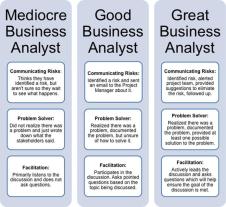What does a good mission statement include?
A good mission statement is a clear, concise, and inspiring declaration that communicates the fundamental purpose, values, and goals of an organization or individual. While mission statements can vary based on the context (e.g., business, nonprofit, personal), there are several essential components that contribute to the effectiveness of a mission statement:
Clear Purpose or Mission:
- What: Clearly articulate the core purpose or mission of the organization or individual. This is the central reason for existence.
Core Values:
- How: Identify the core values and principles that guide decision-making and behavior. These represent the fundamental beliefs that shape the organization's culture or an individual's character.
Long-Term Vision or Aspirations:
- Where: Express the long-term vision or aspirations of the organization or individual. This provides a sense of direction and overarching goals.
Unique Differentiators:
- Why You: Highlight what sets the organization or individual apart from others. This could include unique strengths, capabilities, or approaches.
Inspiring Language:
- Use language that is inspiring, motivational, and resonates with the intended audience. It should evoke a sense of purpose and commitment.
Conciseness:
- Keep the mission statement concise and focused. A shorter statement is more memorable and easier to communicate.
Alignment with Stakeholders:
- Ensure that the mission statement aligns with the values and expectations of key stakeholders, including employees, customers, and the community.
Adaptability:
- Craft a mission statement that allows for adaptability and flexibility. It should remain relevant even as circumstances change.
Actionable Language:
- Use language that implies action and impact. A good mission statement should convey a sense of doing, contributing, or achieving.
Reflective of Culture:
- The mission statement should reflect the culture and identity of the organization or individual. It should resonate with the values and identity of those it represents.
Measurable Elements (Optional):
- In some cases, a mission statement may include measurable elements that indicate success or achievement. This is particularly relevant in the business context.
Timelessness:
- Aim for a timeless quality that allows the mission statement to remain relevant over the long term. Avoid overly specific references that may become outdated.
Example:
Here's an example that illustrates these components:
"At [Organization/Individual], our mission is to [clear purpose] by [core values] and [unique differentiators]. We envision a [long-term vision] where [desired future state]. Guided by our commitment to [core values], we [actionable language] to [make a positive impact/achieve specific goals]."
Remember, the specific content and wording will vary based on the context and nature of the entity for which the mission statement is crafted. It's important to customize the mission statement to authentically represent the values and goals of the organization or individual it represents.
Crafting a compass for success: Elements of a good mission statement
A well-crafted mission statement is a compass for success, guiding an organization towards its goals and aspirations. It should be clear, concise, and inspiring, and it should reflect the organization's core values and beliefs.
Here are some elements of a good mission statement:
- Clarity: The mission statement should be easy to understand and should clearly communicate the organization's purpose.
- Conciseness: The mission statement should be concise and to the point. It should be no more than a few sentences long.
- Inspiration: The mission statement should be inspiring and should motivate employees and stakeholders to work towards the organization's goals.
- Authenticity: The mission statement should be authentic and should reflect the organization's true values and beliefs.
Purpose-driven messaging: What a compelling mission statement includes
A compelling mission statement is one that is purpose-driven. It should articulate the organization's reason for being and its impact on the world.
Here are some key elements of a compelling mission statement:
- Purpose: The mission statement should clearly state the organization's purpose. What problem does it solve? What need does it meet?
- Impact: The mission statement should articulate the organization's impact on the world. How does it make a difference? What value does it create?
- Uniqueness: The mission statement should highlight what makes the organization unique. What sets it apart from its competitors?
Building a strong foundation: The role of values in mission statements
Values are the core principles that guide an organization's decision-making and behavior. They should be reflected in the organization's mission statement.
Here are some ways to incorporate values into a mission statement:
- Use language that reflects your values. For example, if your organization values innovation, you could use the word "innovative" in your mission statement.
- Be specific about your values. Don't just say that you value excellence or integrity. Explain what excellence and integrity mean to your organization.
- Make your values actionable. Your mission statement should inspire employees to live your values.
Aligning with stakeholders: Ensuring resonance in your mission statement
Your mission statement should resonate with your stakeholders, including employees, customers, and partners. It should be something that they can relate to and support.
Here are some tips for aligning your mission statement with your stakeholders:
- Involve your stakeholders in the development process. Get input from employees, customers, and partners on what they think the organization's mission should be.
- Share your mission statement with your stakeholders and get their feedback. This will help you to ensure that your mission statement resonates with them.
- Update your mission statement regularly to reflect the changing needs of your stakeholders.
5. Mission statement checklist: Key components for an impactful statement
Here is a checklist for crafting an impactful mission statement:
- Is your mission statement clear, concise, and inspiring?
- Does your mission statement reflect your organization's core values and beliefs?
- Is your mission statement purpose-driven?
- Is your mission statement unique?
- Is your mission statement actionable?
- Does your mission statement resonate with your stakeholders?
By following these tips, you can craft a mission statement that will guide your organization towards success.











